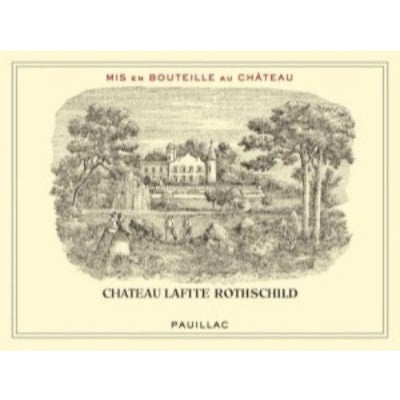
Why Bordeaux’s First Growths should be the First Port of Call for Investors
Back in 2005, a case of the legendary Château Lafite Rothschild 1982 vintage would have set you back $9,400. In 2012, you could have sold that same case for just over $68,000.
There’s money to be made in wine investment, and though few vintages can command the colossal price tag of 1982 Lafite, returns on fine wines can be considerable. To invest successfully, however, it’s essential that you do your homework. Only a tiny percentage of wines on the market make suitable investments, and of these, a select group has proven consistently reliable—generating double-digit returns, year on year, for decades.
So which wines should you invest in? The overwhelming majority of investors choose Bordeaux, and for sound reasons. Wines from this region make up 90% of the secondary market—a testament to their effectiveness as assets. But the pinnacle of all Bordeaux investment wines, the group famed for their reliability, are the so-called ‘First Growths’. Traditionally considered the ‘blue chips’ of the wine world, First Growth vintages never fail to be exceptional. The superb output of the First Growth châteaux has earned them a global renown that’s enough on its own to guarantee continuing demand. First categorized by Emperor Napoleon III back in 1855 as the finest wines of Bordeaux, the original First Growths were Château Lafite-Rothschild, Château Latour, Château Margaux and Château Haut Brion. The celebrated Château Mouton-Rothschild took up its rightful place among these giants in 1973, following a 50-year campaign by the Mouton-Rothschild estate.
The selling price of 1982 Château Lafite may be an extreme example, but it’s common nevertheless for First Growths to command exceptionally high prices—with thousands of dollars paid for individual bottles. Although First Growths can be a relatively expensive investment initially, their high price is one of the reasons why they make such great assets. Expensive wines tend to have the greatest potential for value growth. Added to this, the exclusivity of the wines—which only an extremely wealthy demographic can afford to drink—makes them resilient to wider economic downturn. The kind of end consumer that typically buys First Growth wines tends to be relatively unaffected by the health of the economy at large.
The good news for First Growth investment is that the number of people with serious purchasing clout is growing. Young aspirational consumers from the BRIC nations are leading a growing demand for top-quality wines, as they increasingly look to the illustrious history of Bordeaux as inspiration for their lifestyles. Spiros Malandrakis, researcher at the global information publisher Euromonitor, predicts that over the next five years, sales of wine in these emerging countries will grow by as much as 80%.
Another reason why First Growths make great investments is their complex make-up. These Cabernet Sauvignon blends are rich in tannins, which need a period of years to develop before the wine becomes drinkable. First Growths also tend to improve as they age, until they reach their peak. This creates a favorable situation for investors, who can hold the wines for long enough for substantial value growth to occur.
The impeccable reputation of First Growth wines relies heavily on the strict regulations required for them to be AOC (Appellation d’Origine Controlle) certified. These regulations control the winemaking process, ensuring that exacting standards are always adhered to. The AOC also restricts the size of the vineyards, resulting in another boon for wine investors—a very limited supply. With demand constantly rising, a supply–demand imbalance is created, pushing up the First Growths’ value. What’s so special about wine investment is that unlike other commodity markets that are governed by an imbalance between supply and demand—precious metals for example—every vintage of a particular wine is completely unique, and once gone can never be replicated. Over time, as consumers drink wines from a given vintage, their supply is reduced more and more. This situation creates a perfectly inverse relationship between supply and demand that’s exclusive to fine wine. It’s a major reason why prices for Bordeaux’s First Growths have risen so consistently over the last few decades.
You can learn more about the history and character of the First Growth wines, including their price movements over time, on our Invest in Wine page.
Also in News



